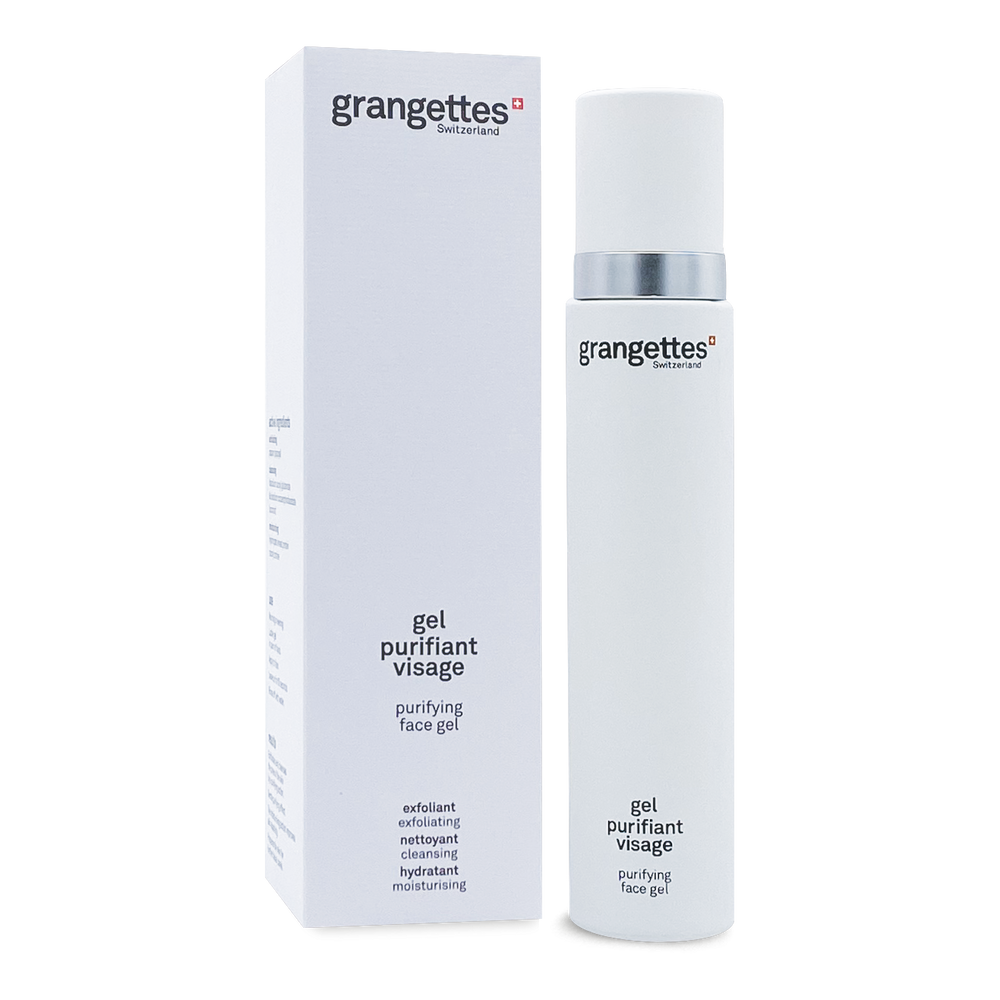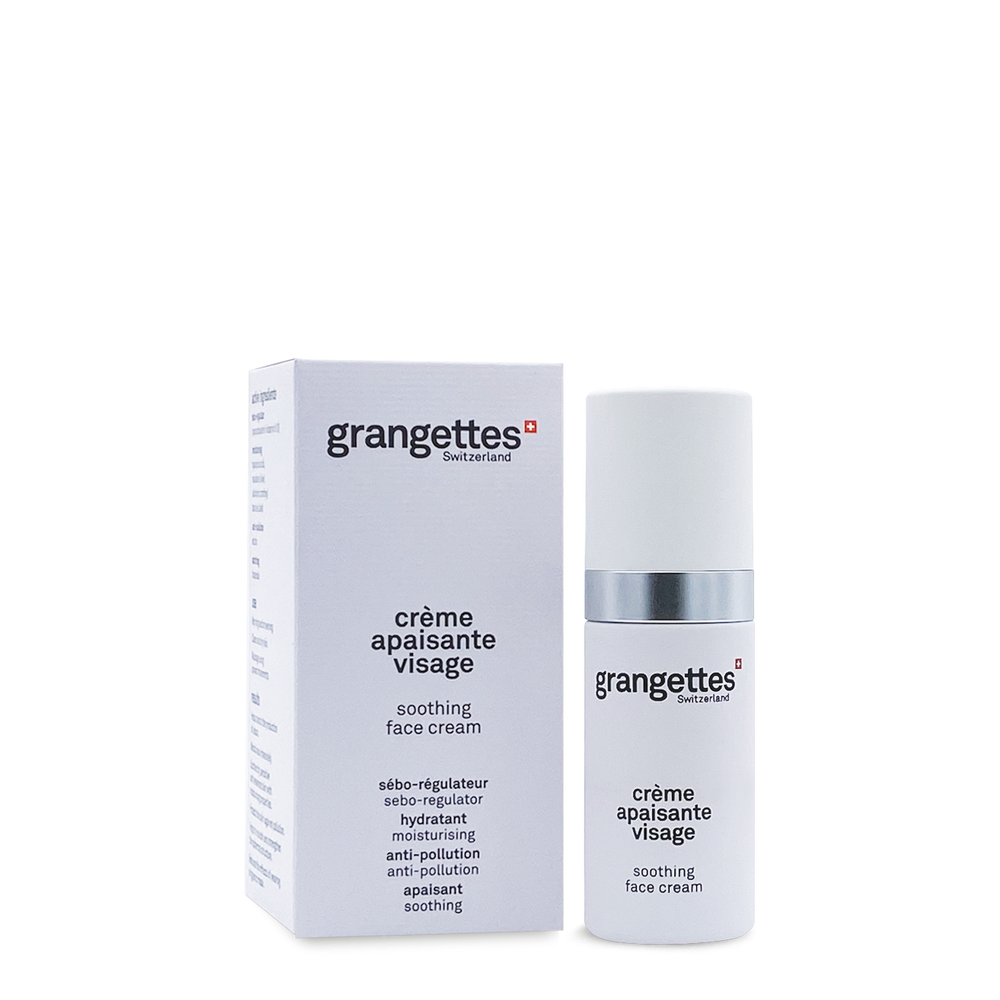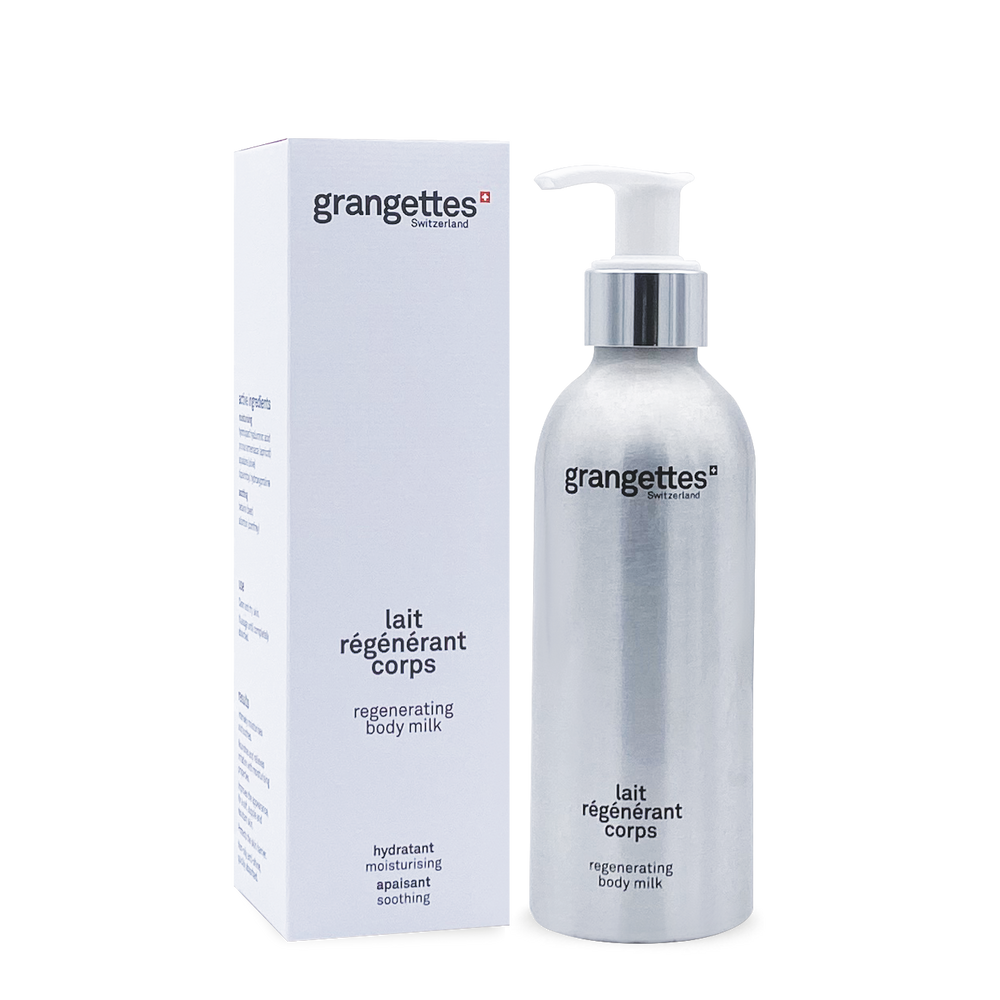10 causes of grainy skin
Cause #1: accumulation of dead skin cells
One of the most common causes of rough skin is the buildup of dead cells on the skin's surface. When skin cells do not naturally shed, they can clog pores, causing a rough, dry texture. A lack of regular exfoliation can worsen this problem.
Cause #2: excess sebum
Excessive production of sebum by the sebaceous glands can lead to oily skin and clogged pores, giving the skin a rough appearance. Excess sebum can form comedones (blackheads or whiteheads) which, if untreated, lead to skin breakouts.
Cause #3: acne and microcysts
Acne and microcysts, often present on oily skin, can cause granular skin. Microcysts are small bumps beneath the skin surface that do not always develop into visible breakouts but create an uneven texture. They are often due to the accumulation of sebum, dead cells, and bacteria in the pores.

Cause #4: excessive sun exposure
Damage caused by UV rays can alter the skin texture by breaking down collagen and elastin, two essential proteins that keep the skin smooth and firm.
Cause #5: dehydration
Dry skin, insufficiently hydrated, can appear dull and rough. When the skin lacks water, it loses elasticity and its ability to regenerate, which can cause uneven texture. Proper hydration is essential to maintain soft and smooth skin.
Cause #6: underlying medical conditions
Certain medical conditions can cause rough skin, such as keratosis pilaris, a condition causing an excess of keratin (a skin protein). This clogs hair follicles, causing small rough bumps, often on the arms, thighs, or buttocks. Other skin conditions, like eczema, atopic dermatitis, or rosacea, can also cause uneven skin texture.
Cause #7: use of unsuitable cosmetic products
Using cosmetic products unsuitable for your skin type, especially comedogenic products (which clog pores), can contribute to the appearance of bumps and blemishes.
Moreover, not cleansing your skin regularly can lead to a buildup of impurities and dead skin cells.
Additionally, the overuse of harsh products or those containing irritating ingredients (such as alcohol, sulfates, and certain preservatives) can disrupt the skin barrier, resulting in rough and uneven skin.
Cause #8: hormonal changes
Hormonal fluctuations, especially during puberty, the menstrual cycle, pregnancy, or menopause, can lead to increased sebum production and skin breakouts. These hormonal changes can make the skin more prone to acne and the appearance of roughness.
Cause #9: poor diet
An unbalanced diet, rich in refined sugars, saturated fats, and processed products, can exacerbate skin inflammation and lead to rough skin.
Deficiencies in essential vitamins and minerals, such as vitamins A, C, E, and omega-3 fatty acids, can also affect skin texture and health.
Cause #10: pollution and environmental factors
Exposure to air pollution, toxins, and other environmental irritants can lead to a buildup of dirt and particles on the skin, clogging pores and contributing to a rough appearance.
Aggravating factors of rough skin
In addition to these 10 main causes already presented, some aggravating factors deserve to be highlighted:
-
Lack of sleep: insufficient rest slows cell renewal and accentuates skin irregularities;
-
Stress: it can disrupt sebum production and increase skin inflammations, contributing to a rough appearance;
-
Tobacco and alcohol: they reduce oxygenation and nutrition of the skin, promoting a dull and uneven texture.
-
Overly aggressive cleansing: trying to "strip" the skin can destroy the protective barrier and increase roughness.
These elements do not necessarily create rough skin, but they can amplify the problem or slow healing.
Act effectively against rough skin: our action plan
Practice regular exfoliation
Exfoliation or scrubbing are the most effective methods to reduce the rough texture of the skin by removing dead cells that accumulate on the surface.
The Grangettes purifying cleansing gel has a gentle exfoliating action, allowing you to daily remove dead skin cells and fight against rough skin.
- Regular price
- 41,35 €
- Regular price
- Sale price
- 41,35 €
- Unit price
- per
Moisturize day and night
Good hydration is essential to keep the epidermis smooth and supple. Use a moisturizing face cream morning and evening, suitable for your skin type that contains ingredients such as:
- The hyaluronic acid: this hydrating ingredient attracts water into the skin, thus improving hydration and reducing dryness and roughness;
- The niacinamide : it improves skin texture, soothes redness and inflammation, and strengthens the skin barrier.
Also properly hydrate your body after showering, with a regenerating milk.
- Regular price
- 40,20 €
- Regular price
- Sale price
- 40,20 €
- Unit price
- per
- Regular price
- 40,20 €
- Regular price
- Sale price
- 40,20 €
- Unit price
- per
Protect your skin from the sun
Protecting the skin from sun damage is essential to prevent rough skin and other texture problems. Use a broad-spectrum lotion or sunscreen with an SPF of at least 30 every day, even on cloudy days or in winter.
Treat underlying causes
If rough skin is caused by an underlying skin condition (such as keratosis pilaris, acne, or dermatitis), it is important to treat that specific issue:
- Keratosis pilaris: use moisturizing creams containing urea or lactic acid to gently exfoliate and hydrate the skin;
- Acne: use a day cream suitable for acne, or cleansers containing salicylic acid or benzoyl peroxide;
- Dermatitis or eczema: use a moisturizing cream rich in ceramides.

Consult a dermatologist
If home care methods are not enough to improve skin texture, consult a dermatologist. They may recommend professional treatments such as chemical peels, microdermabrasion, laser, or intense pulsed light. Microneedling may also be recommended: it is a technique that uses small needles to stimulate collagen production and improve skin texture and firmness.
Adjust your lifestyle to improve rough skin
Cosmetic skincare is not the only answer. Grainy skin can also be improved by healthy lifestyle habits:
-
Internal hydration: drinking enough water helps maintain skin elasticity and softness;
-
Balanced diet: what to eat for beautiful skin? Favor foods rich in antioxidants (red fruits, green vegetables, fatty fish) to protect your skin from free radicals;
-
Daily sun protection: even on cloudy days, apply sunscreen to limit UV damage that worsens rough texture;
-
Gentle hygiene: cleanse the skin morning and evening with a product suited to your skin type, without harsh sulfates.
FAQ on grainy skin
1. What are the main causes of grainy skin?
Grainy skin can be linked to the buildup of dead cells, excess sebum, acne, microcysts, dehydration, or skin conditions like keratosis pilaris.
2. How to make grainy skin smoother?
Gentle cleansing, regular use of an exfoliant, daily hydration, and the use of actives like hyaluronic acid and niacinamide help improve skin texture.
3. Is grainy skin always related to acne?
No, grainy skin can have multiple causes: dehydration, sun exposure, hormonal imbalances, or even pollution. Acne is just one possible cause.
4. When should you see a dermatologist for grainy skin?
If the skin remains rough despite a suitable routine or if it is associated with a skin condition (keratosis pilaris, eczema, rosacea), it is advisable to consult a professional to consider appropriate medical or aesthetic treatments.
5. What exactly is grainy skin?
Grainy skin is an uneven skin texture that gives a rough or bumpy feel to the touch.
6. Does grainy skin disappear with a good facial care routine?
Yes, in most cases, a suitable routine helps to restore smoother skin. However, if grainy skin is linked to a medical condition (such as keratosis pilaris), targeted or medical treatments will be necessary.
7. What actions should be avoided if you have grainy skin?
Avoid overly abrasive scrubs, harsh cleansers, and sun exposure without protection. These actions worsen roughness and can further weaken the skin.







